Does Cosmos Need Fertilizer: How To Fertilize Cosmos Flowers
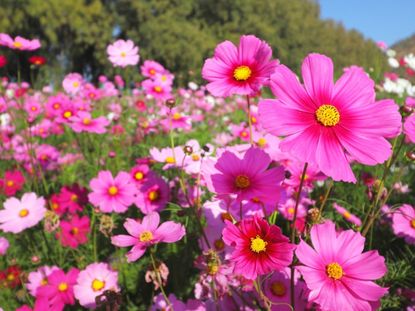
Its brightly colored flowers and hardy nature makes cosmos a favorite plant in beds and landscaping designs. Like many annuals, cosmos is almost self-sufficient when it comes to nutrients. Feeding cosmos plants is often a case of doing less to achieve more, as giving too much nitrogen will cause the plants to slow flower production. Learn how to fertilize cosmos the right way to ensure you have a plant covered in blooms instead of simple greenery.
Information on Fertilizing Cosmos
Information for feeding cosmos plants consists mostly of reasons why you shouldn't do it. Nitrogen encourages strong greenery and discourages the production of flowers. Most balanced fertilizer blends contain too much nitrogen for flowering annuals. It's a vicious circle some gardeners get stuck in: they don't see blooms, so they fertilize their plants hoping to encourage flowers. The more fertilizer they add, the fewer flowers will appear. Of course, when plants fail to bloom, an addition of phosphorus fertilizer for cosmos, such as bone meal, will alleviate the problem. Once the soil recovers from the excess nitrogen, however, cosmos will again be covered in masses of colorful blooms.
Tips for Feeding Cosmos Plants
So when do cosmos need fertilizer? Whether you plant your seeds in six-packs inside before the last frost date or you seed it directly in the garden, cosmos plants can use a small amount of fertilizer as soon as they are planted. Choose a fertilizer specifically made for blooming plants, which will have a low nitrogen count. Mix the minimum amount into the soil when planting seeds, and avoid feeding them for the rest of the season. Fertilizer for cosmos planted in containers is a little more crucial. Due to the small amount of soil available for roots to feed from, these plants need to be fed a bit more frequently. Sprinkle a half teaspoon of blooming plant fertilizer on the soil around each plant and water it into the soil. Repeat this feeding once every three to four weeks until the end of the flowering season. If your plants start to slow down on the flower production, cut back on the fertilizer for a couple of weeks to see if new flowers appear, then adjust your fertilizer schedule accordingly.
Gardening tips, videos, info and more delivered right to your inbox!
Sign up for the Gardening Know How newsletter today and receive a free download of our most popular eBook "How to Grow Delicious Tomatoes."
-
 10 Best Apartment Plants To Turn Your Small Space Into An Oasis
10 Best Apartment Plants To Turn Your Small Space Into An OasisThe best apartment plants can lend an ambience of the tropics, brighten up a space, or add a touch of drama, and turn an apartment into a relaxing oasis.
By Amy Grant
-
 Grow a Bathroom Oasis: 8 Best Bathroom Plants With No Light or Low Light
Grow a Bathroom Oasis: 8 Best Bathroom Plants With No Light or Low LightSome apartment dwellers grow the best bathroom plants with no light or low light. Read how one of our favorite plant lovers does it in the big city.
By Teo Spengler
-
 Cutting Back Cosmos For More Blooms
Cutting Back Cosmos For More BloomsCutting cosmos will give you new flowers for the entire growing season as well as blooms for floral arrangements. Click to learn when and how.
By Mary Ellen Ellis
-
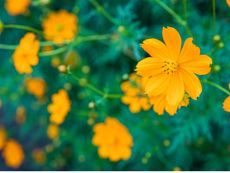 Sulphur Cosmos Information – How To Grow A Mexican Aster Flower
Sulphur Cosmos Information – How To Grow A Mexican Aster FlowerBy Mary Ellen Ellis
-
 Cosmos Plant Varieties: Learn About Types Of Cosmos Plants
Cosmos Plant Varieties: Learn About Types Of Cosmos PlantsWhen it comes to considering the many types of cosmos plants on the market, gardeners are faced with a wealth of riches. Learn about a few of the best cosmos plant varieties and cosmos flower types for the garden in this article.
By Mary H. Dyer
-
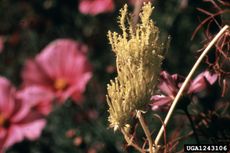 Cosmos Flower Diseases – Reasons Cosmos Flowers Are Dying
Cosmos Flower Diseases – Reasons Cosmos Flowers Are DyingCosmos plant diseases range from fungal to bacterial and into insect vectored viruses. Controlling insects, providing proper irrigation and planting healthy plants can minimize these problems. Click here to learn more in this article.
By Bonnie L. Grant
-
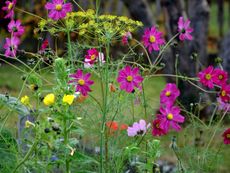 Companion Plants For Cosmos – Learn About Cosmos Companion Plants
Companion Plants For Cosmos – Learn About Cosmos Companion PlantsWhat grows well with cosmos, and why do cosmos need companions? Companion planting serves a number of valuable purposes in the garden. Click this article to find out what plants grow well with cosmos in the garden.
By Mary H. Dyer
-
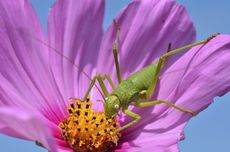 Common Insects On Cosmos: Treating Pests On Cosmos Plants
Common Insects On Cosmos: Treating Pests On Cosmos PlantsCosmos plant pests are rare and generally don't cause significant damage to the health of the plant. What pests do cosmos get? Learn about treating pests on cosmos plants in this article and keep your flowers looking beautiful.
By Bonnie L. Grant
-
 Caring For Chocolate Cosmos Plants: Growing Chocolate Cosmos Flowers
Caring For Chocolate Cosmos Plants: Growing Chocolate Cosmos FlowersChocolate isn't just for the kitchen, it's also for the garden, especially a chocolate one. Growing chocolate cosmos flowers will delight any chocolate lover. This article had information on its care in the garden. Click here to learn more.
By Gardening Know How
-
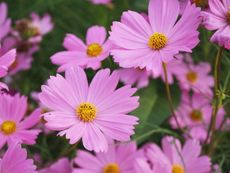 Cosmos Not Flowering: Why Are My Cosmos Not Blooming
Cosmos Not Flowering: Why Are My Cosmos Not BloomingCosmos is a showy annual plant commonly grown in gardens. But what happens when there are no blooms on cosmos? Read this article to learn more about why cosmos will not flower.
By Susan Patterson